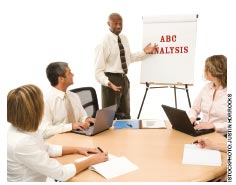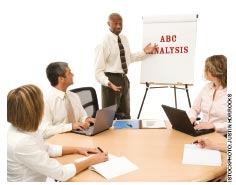
The Emerging Role of the Safety Professional: Part 2
Become a change agent for your own good and that of your organization.
- By Don Groover, CIH, CSP, Jim Spigener
- May 01, 2008
 As the business landscape continues to
change, safety professionals are faced
with rethinking their traditional role.
Staying relevant as the organization
changes means learning how to leverage
your knowledge, skills, and experience in
new ways. This article, the second in a
series on the changing role of the safety
professional, presents the case for transitioning
from technical expert to change
agent and outlines the core competencies
of this new role.
As the business landscape continues to
change, safety professionals are faced
with rethinking their traditional role.
Staying relevant as the organization
changes means learning how to leverage
your knowledge, skills, and experience in
new ways. This article, the second in a
series on the changing role of the safety
professional, presents the case for transitioning
from technical expert to change
agent and outlines the core competencies
of this new role.
The Technical Expert Trap
Safety today is increasingly treated as a
business function with tangible business
impacts, rather than as a discrete function
managed by a handful of people. More
organizations are expecting safety thinking
and engagement from employees across
levels and functions, including senior
leaders. Alongside broader engagement,
organizations also are identifying a wider
scope of systems outside traditional safety
silos that influence safety functioning.
These developments, while undoubtedly
positive, pose a challenge to safety
professionals. Simply put, a wider role for
safety in the organization will mean an
increased need for strategy and change
management expertise and an increased
demand for complex information about
hazards and the factors that create them.
For even the best safety professionals,
being pegged as a “technical expert”
without strategic capabilities can increasingly
limit options and opportunities. Ultimately,
it affects the ability to shape EHS
functioning within the business.
If you are a technical expert in EHS,
the good news is that you already have the
skills and knowledge to contribute to
safety strategy. The hard part will be
gaining fluency in organizational change
management and recasting yourself as an
agent of change.
Core Competencies of a Change Agent
A change agent is in the business of
advancing performance by identifying how
to get there and enlisting others in that
endeavor. Change agents in safety do not
leave their technical expertise behind; they
simply leverage it to develop strategies for
sustainable, high-level performance. The
difference between technical expert and
change agent here is akin to the difference
between a manager and
a leader. One is concerned
with the “what”
of the safety objective
and in executing the
particulars, the other
with the “how” of the
objective and with
guiding the strategy.
There are a number
of elements that create
effective change agents:
remaining ever curious,
continuous learning,
and building fluency in
the behavioral sciences,
consequence management,
exposure recognition and reduction,
and other tools for safety improvement.
At its core, the competencies of an
effective change agent come down to
three things: knowing and maintaining
focus on the safety objective, understanding
behavior, and understanding culture
and safety climate.
Knowing the focus
As a technical expert, you have a focus on
safety that probably has been on the particulars:
what hazards exist where and what
systems are needed to mitigate them. As a
change agent, you need to develop a view
of the performance target that is high and
broad. The ultimate goal of any safety
effort is to reduce exposures. Rather than
concentrate only on finding and removing
exposures, a high and broad focus looks for
how exposures are created by organizational
systems and the interactions of
people with technology and processes.
Organizations striving to create a zeroinjury
culture need this view in order to
identify previously unknown or underappreciated
exposures and to ensure the
mechanisms they install are effective at
controlling them. By providing this view,
you allow your organization to move away
from “chasing injuries” to managing risk
within the fabric of the business itself.
Understanding behavior
Safety professionals are often drawn into
discussions about behavior: namely, how do
we get people to do the right things in the
right way? From an on-the-ground perspective,
the solution to a safety-related
behavior—for example, employees not
intervening when they see a peer working at risk—might seem simple. Develop a
checklist, put people in a training session,
and tell them we expect them to do it. This
might work if the only barrier to the
behavior was a lack of awareness or feedback
skills. As a change agent, however, you
need to know exactly what factors are driving
this behavior in order to forward the
right solution.
A very helpful tool for safety professionals
is ABC Analysis, a method that
helps decipher what influences organizational
behavior. We analyze the behavior
by defining an example of it. (For example:
“An employee does not stop a co-worker
who is about to start grinding without a
face shield.”) Talking to employees, we
might find that the antecedents (triggers)
of this negative behavior are:
• I am afraid it will start a conflict.
• I am too busy.
• The person has more seniority
than me.
• They should know better.
• No one else intervenes.
• It is the supervisor’s job.
• The person wouldn’t listen to me
anyway.
• I didn’t think they would get hurt.
• I do it the same way.
• I am not really sure how to do this.
These particular antecedents tell us that
the triggers are primarily culture and climate.
We only find one system issue (lack
of skill) and no conditional issues that are
triggering the behavior.
The next step is to identify the consequences—
defined here as what the person
actually receives as consequences, not what
we think they are going to get or consequences
to the organization. For this part
of the analysis, you can ask, “What’s in it
for the person to do this behavior?” The
answers could be:
• I avoid conflict.
• I get my work done.
• I don’t look like I am “sucking up”
to the boss.
• I stay friends with the person.
• I don’t embarrass myself.
• I could get in trouble.
• I feel guilty if they get hurt.
Consequences vary in power based on
timing, consistency, and significance. Consequences
that happen quickly after the
behavior are more powerful than those
that have a delay (sooner versus later).
Consequences that are more likely to
happen “this time” are more powerful than
those that are unlikely (certain versus
uncertain). Finally, consequences I view as
positive are much more desirable to me
than a negative consequence. So consequences
that are soon/certain and positive
(S/C/+) are more powerful. Here, the
analysis might look like:
I avoid conflict S/C/+
I get my work done S/C/+
I don’t look like I am sucking up to
the boss S/C/+
I stay friends with the person S/C/+
I don’t embarrass myself S/C/+
Not intervening becomes OK S/C/+
I feel guilty if the person gets hurt
L/U/-
I could get into trouble L/U/-
In this instance, there are six very powerful
consequences reinforcing the undesired
behavior. The “train and tell”
approach we might have attempted before
the analysis would clearly not produce
sustainable improvement. In fact, this
analysis suggests that an intervention
higher up in the organization, where culture
is created, might be more productive.
The particulars of your analysis, the
nature of antecedents and consequences—
and, therefore, the remedy—will change
depending on your organization and the
behavior you investigate. The point is that
when you are able to dig into what shapes
a behavior, you gain a better understanding
of how to change it.
Understanding culture and safety climate
Finally, change agents are versed in the
organizational factors that shape outcomes.
In the ABC analysis above, we
gained an insight into how attitudinal, climatic,
and cultural factors can have a
strong influence on individual behavior.
Culture here refers to the shared values
and beliefs of an organization. Climate is
the prevailing influences on a particular
area of functioning (such as safety) at a
particular time. One can think of culture
as background influence on the organization,
while climate is foreground. Climate
changes faster than culture, often very
quickly after a significant incident.
Without significant and conscious effort,
however, the underlying culture is likely
not to change sufficiently to prevent further
incidents. As the saying goes, “When
strategy meets culture, culture eats strategy
for breakfast.”
Culture is a creation of leadership. To
become an effective change agent, the
safety professional must understand the
ways in which leaders are shaping culture
(through their behaviors, decisions, and
influence styles) and what effect that is creating
on safety functioning. As a change
agent, you must alert leaders when they are
taking the short view, challenge a strategy
that is not going to deliver sustainable
improvement, and provide sound recommendations
for how to proceed.
Putting the Pieces Together
Transitioning from technical expert to
change agent does not happen overnight;
the competencies outlined here take study,
practice, and persistence. While there will
always be a need for technical expertise,
assuming a strategic capability positions
you to become an invaluable asset to your
organization, enhance your professional
satisfaction, and ultimately advance your
mission as a safety professional: protecting
lives and livelihoods.
Read the entire "Emerging Role" series: Part 1 Part 3 Part 4
This article originally appeared in the May 2008 issue of Occupational Health & Safety.